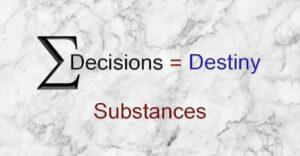As we did research for this web site, we discovered that there is no rock-solid definition of just what are the Pillars of our government. The term is often confused with the Pillars of Democracy, which is more closely aligned with Greek and Roman concepts of government. It would seem for certain that our schools and colleges no longer teach the difference between a Democracy and a Republic.
But even those who believe we are a Democracy become confused and change with the whims of those presenting the arguments or the sentiment of the times. One argument is that the four pillars are Impartiality, Representation, Liberty, and Justice. Then there is the belief that there are only two: Sanctity of the Law and Freedom of the Press. Others might argue for five: Freedom of Speech, Freedom of Religion, Freedom of the Press, Freedom of Assembly, and Freedom to Petition. We even found one reference for seven: Legitimacy, Separation of Powers, Popular Participation, Periodic Elections, Checks and Balances, Rule of Law, and Fundamental Human Rights. To say there is no consensus on this question is an understatement.
All these proposals have two things in common. First, everything listed is already included in our Constitution and Bill of Rights. Second, they miss the point because we are not a pure Democracy. Democracies often end in mob rule, which is why our Founders gave us a Republic. Even within the phrase “Pillars of the Republic” we can find overlap with the phrase “Pillars of Democracy” as people and academics either unintentionally or intentionally interchange the terms to suit their needs.
Often those who recognize the distinction define the Pillars of the Republic in terms of the three branches of government, plus freedom of the press. But freedom of the press is only one of the defined freedoms in the First Amendment, which also includes freedoms of speech, religion, petition the government for redress, and peaceful assembly. With recent events many citizens are beginning to question the independence of our press, so as a fundamental underpinning of our Republic it needs some shoring up. Freedom of the press is key, but the envisioned press was independent and, to the degree possible, unbiased. This right sits equally with the other freedoms in the First Amendment and the Bill of Rights, not above.
All of this is a long way of saying that we concluded that there are indeed four Pillars of our Republic and that they are inclusive of all we read. The inclusiveness of these pillars speaks to the genius of the Founding Fathers and just how unique their deliberations were when we cycled through the Declaration of Independence, and then on to the writing of the Constitution and the Bill of Rights.
On this web site we ask that authors categorize their writings with regard to their placement within the Constitution and/or Bill of Rights. We do that so that we all stop and think about how our article relates to our freedoms. All that we do each day and all the freedoms we enjoy originate with the Constitution and the Bill of Rights. Having grown up in this environment, it is all we know, so we take it for granted.
Our school-age children, particularly college age, are susceptible to influences that seek to tear apart the very foundation of those liberties. It is up to parents to understand and reinforce those freedoms and values with their children. It is incumbent on teachers to either teach those values and the liberties we enjoy, or to leave the profession. Perhaps because of Covid, parents have had the time and energy to look deeply into what their children are being taught, and they don’t like it. The trend with parents becoming more involved with school boards and local curriculums is one of the most positive in years.
God Bless America, and long live our Republic!
On August 24, 2022, we did a search for the term “Pillars of the Republic” on Bing and discovered that there were 19.3 billion references; a similar search on Google only produces 40.9 million, but by either measure there are a lot of references. Often the first reference is to the excellent book written by Carl Kastle and published back in 1983. The book covers the development of the common schools in America from 1760 until 1860. This book is informative on the public-school transition in the United States and is well worth reading if the topic of early childhood education is of interest.







